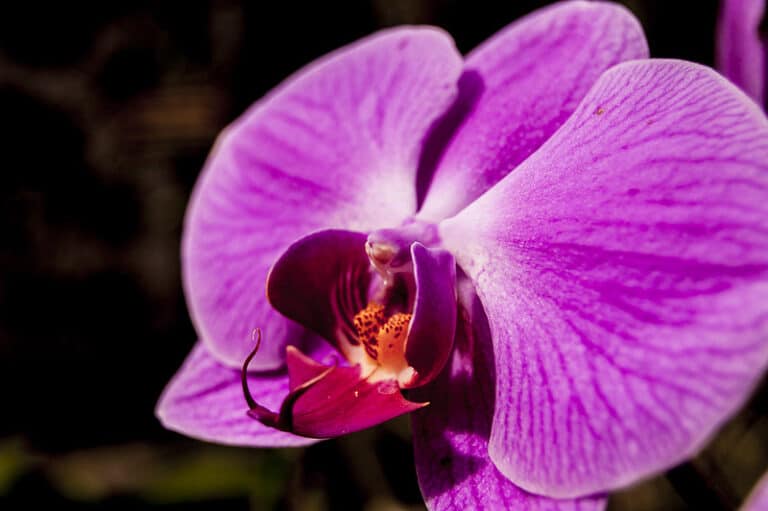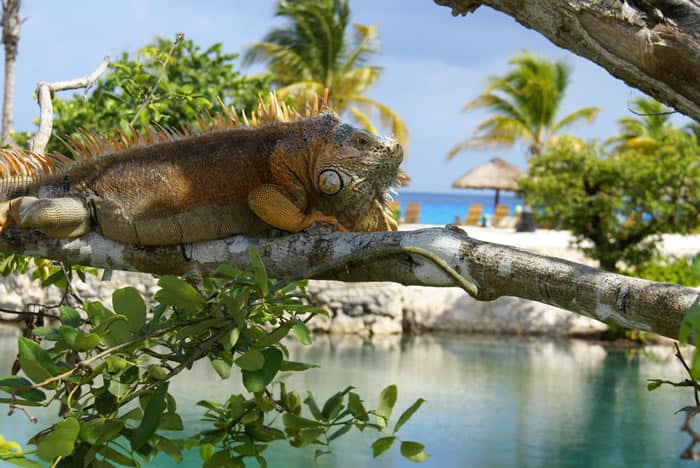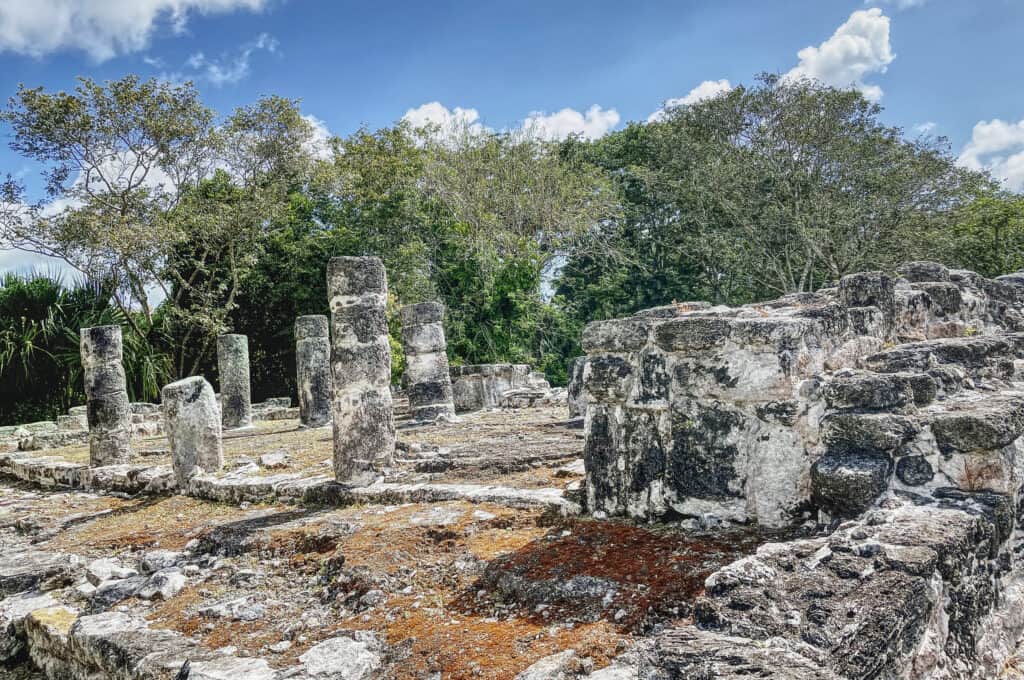Cozumel is renowned for its natural beauty, and you will need a copy of a guide to Cozumel’s native flora and fauna to enjoy everything. The island of Cozumel lies in the eastern Caribbean Sea, just off the Yucatan Peninsula. We know it for its coral reef, which was declared a UNESCO World Heritage Site in 2008. The island is also home to a diverse range of flora and fauna, many of which are found nowhere else on Earth. Many of these species, such as the Cozumel Island scrub jay, are now listed as threatened species in the United States and elsewhere.
Cozumel is a paradise for those who love nature and adventure. It boasts over 700 species of birds, including the endangered Puerto Rican night heron and the Puerto Rican parrot, which is the largest parrot species in the world. Here’s your guide to some of the most notable flora and fauna you’ll find on Cozumel.
Trees
The island’s trees are a key part of its lush landscape.
Among the most common species are the mahogany tree (Swietenia humilis), which grows to an average height of 30 meters (98 feet), and the fragrant gumbo-limbo tree (Bursera simaruba), whose leaves emit a pleasant aroma when crushed.
Other noteworthy trees include the West Indian locust tree (Hymenaea courbaril), which can grow up to 40 meters (131 feet) tall, and the Caribbean pine (Pinus caribaea), the tallest tree on the island, which can reach heights of up to 50 meters (164 feet).
Avocado trees are also popular on the island, and you’ll often see them growing in people’s yards.
Shrubs and bushes
Besides its trees, Cozumel is also home to a variety of shrubs and bushes. Among the most common species are the yellow oleander (Thevetia peruviana), which produces bright yellow flowers, and the poisonwood tree (Metopium toxiferum), whose leaves and berries are poisonous if ingested.
Other notable shrubs include the hibiscus (Hibiscus rosa-sinensis), which produces beautiful flowers in a variety of colors, and the beach morning glory (Ipomoea pes-caprae), which is found growing near the shoreline.

Orchids
Cozumel is also home to several different orchids. The island’s most common species is the bird’s nest orchid (Epidendrum ibaguense), so named because its flowers resemble small birds’ nests.
Other noteworthy species include the butterfly orchid (Encyclia cochleatum), which produces fragrant flowers that attract butterflies, and the tiger orchid (Oncidium sphacelatum), whose flowers are marked with spots that resemble a tiger’s fur.
Ferns
Ferns are another common type of plant on Cozumel. Among the most common species is the tree fern (Cyathea arborea), which can grow to a height of 15 meters (49 feet), and the royal fern (Osmunda regalis), which can grow up to two meters (6.6 feet) tall.
Other noteworthy ferns include the staghorn fern (Platycerium bifurcatum), whose leaves resemble the antlers of a stag, and the resurrection fern (Pleopeltis polypodioides), which can survive for long periods of time without water.
Cacti
Cacti are also a common sight on Cozumel. Among the most common species is the prickly pear cactus (Opuntia ficus-indica), which produces a fruit that is popular among locals and visitors alike.
Other noteworthy cacti include the night-blooming cereus (Selenicereus grandiflorus), which produces large, white flowers that only bloom at night, and the beavertail cactus (Opuntia basilaris), which gets its name from its leaves, which resemble the tail of a beaver.

Animals
Cozumel is home to a variety of different animals.
Among the most common are lizards, such as the green iguana (Iguana iguana) and the common whiptail lizard (Cnemidophorus inornatus).
Other common animals include the green anole (Anolis carolinensis), a type of lizard that can change its color from green to brown, and the Puerto Rican crested toad (Bufo lemur), which is endemic to the island.
Birds
Cozumel is also home to a variety of different kinds of birds. Among the most common are pelicans, such as the brown pelican (Pelecanus occidentalis) and the white pelican (Pelecanus erythrorhynchos).
Other common birds include seagulls, such as the laughing gull (Larus atricilla) and the herring gull (Larus argentatus), and ducks, such as the ruddy duck (Oxyura jamaicensis) and the Mexican duck (Anas platyrhynchos diuma).
Insects
Cozumel is also home to a variety of different kinds of insects. Among the most common are butterflies, such as the monarch butterfly (Danaus plexippus) and the queen butterfly (Danaus gilippus).
Other common insects include bees, such as the honey bee (Apis mellifera) and the carpenter bee (Xylocopa varipuncta), and ants, such as the red imported fire ant (Solenopsis invicta) and the Argentine ant (Linepithema humile).


